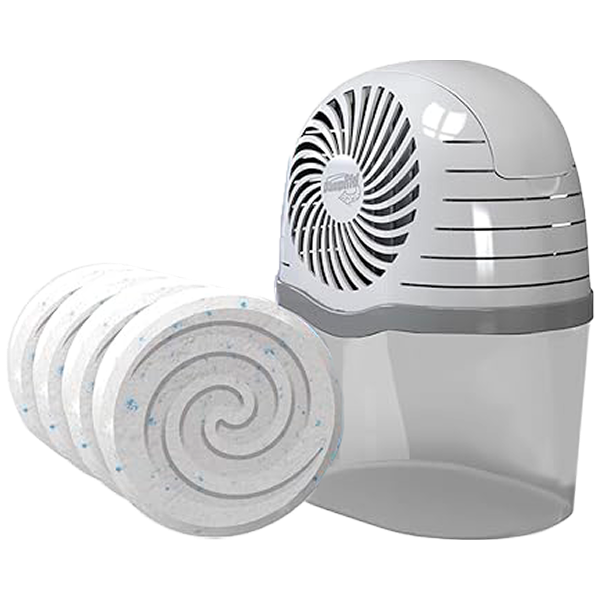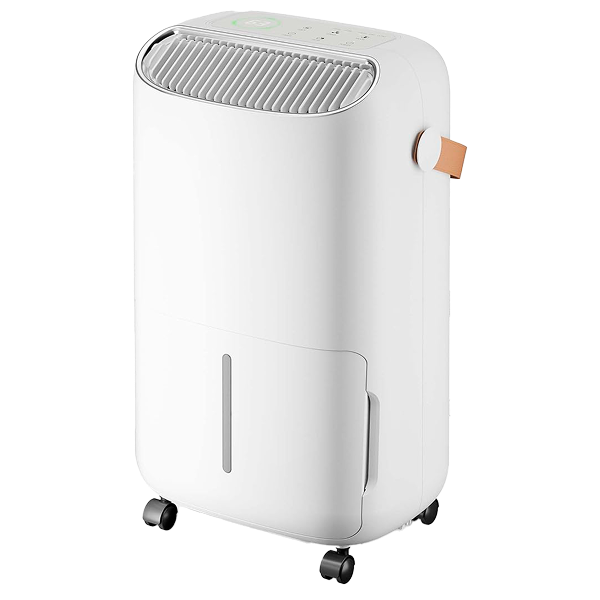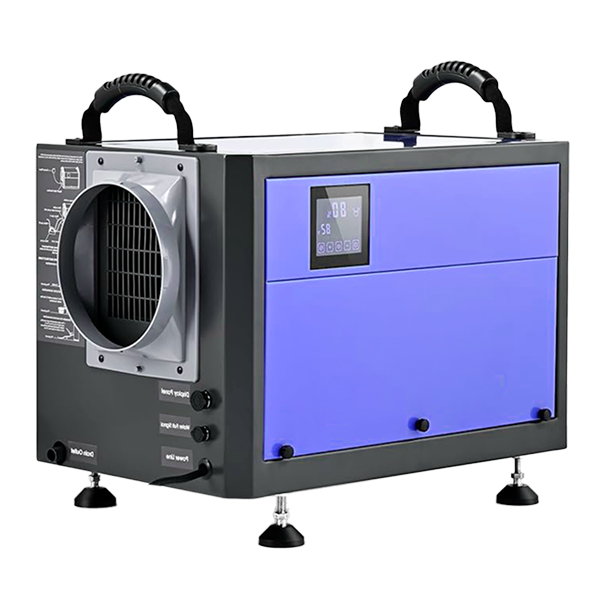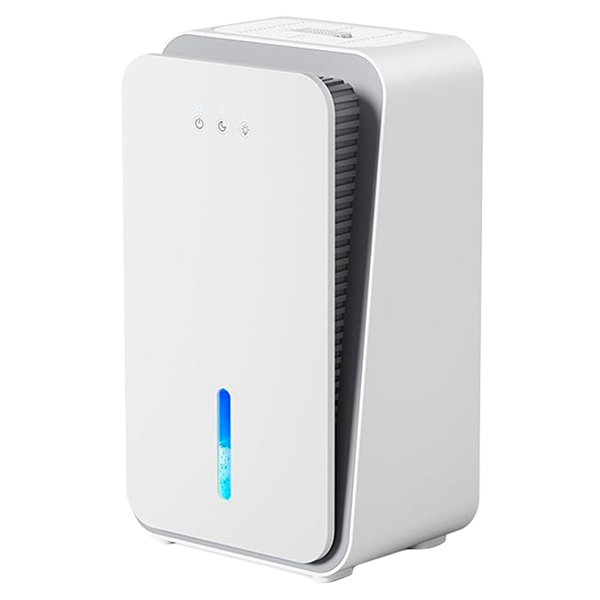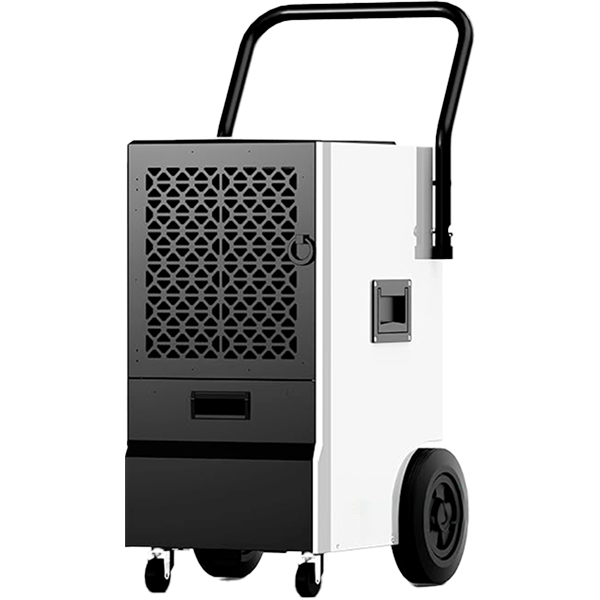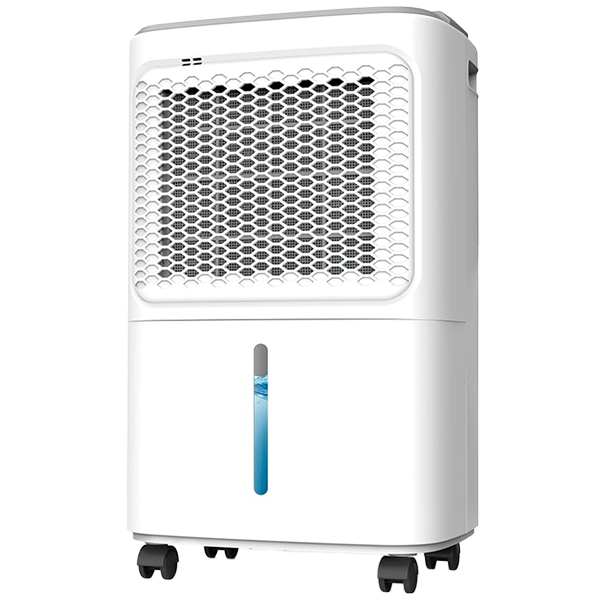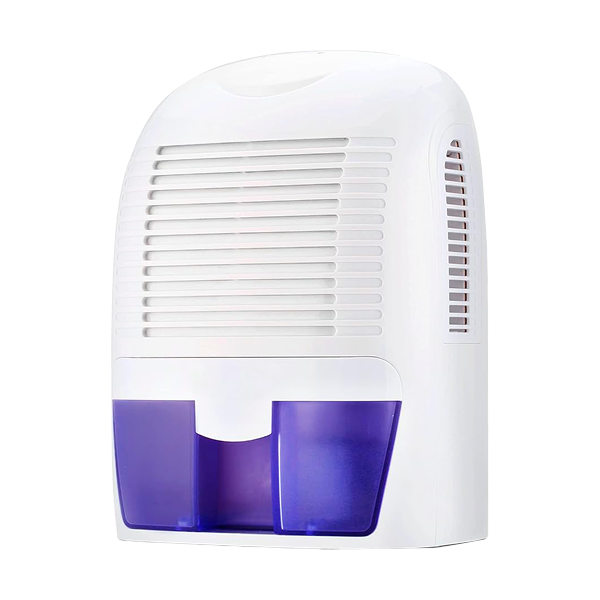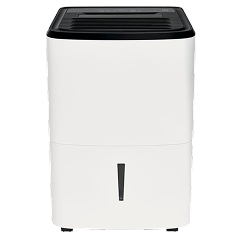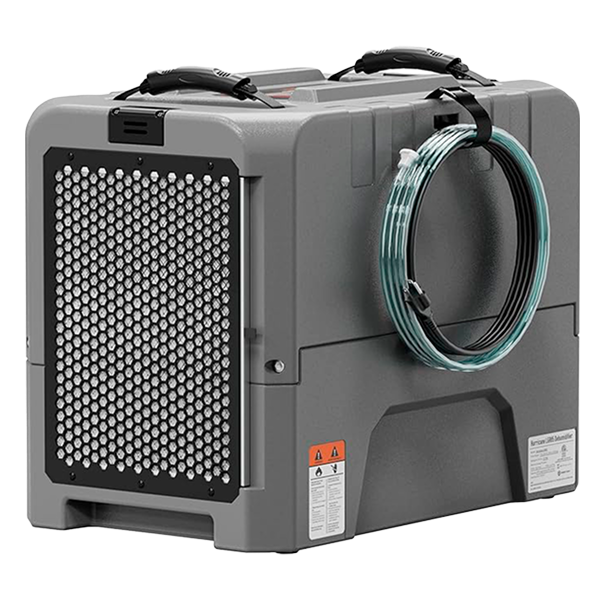There are many reasons you might need a large dehumidifier – from tackling moisture in open-plan spaces to enjoying advanced modes that smaller units don’t offer. These larger models are ideal if you need that extra bit of power.
However, with that performance comes a bulkier build; large dehumidifiers often feature bigger water tanks, heavier designs, and more complex controls. In this guide, we’ll outline their key features, explain what to look for when buying, and review popular manufacturers to help you choose the right large dehumidifier for your space and needs.
For a broader overview of dehumidifier types, common household scenarios, and leading brands, see our overall guide.
Moisture Extraction (L/24 h)
Measured in litres per hour, this shows how much moisture the dehumidifier can remove in 24 hours. Large units typically handle 20–35L/day, with commercial models going even higher. The right capacity depends on the size of your space and how serious the damp problem is.
- 20–25L/day – Entry-level large units. Best for big rooms, small open-plan areas, or homes with moderate dampness.
- 25–30L/day – Standard for large dehumidifiers. Suited to whole flats, basements, or open-plan living spaces with significant humidity.
- 35L+/day – Typically commercial dehumidifiers. Designed for warehouses, offices, and very large or flood-affected properties.
If your home has stubborn damp, condensation, or mold, go for the higher extraction end to see faster results.
Coverage Area (m²)
Always check that the model you’re considering is powerful enough for your space. Open-plan layouts or homes with lots of nooks and crannies may need extra capacity to ensure even drying.
- 40–70 m² – Entry-level large units. Ideal for big living rooms, basements, or small open-plan areas.
- 70–120 m² – Standard large units. Well-suited to whole flats, large basements, or ground floors.
- 120 m²+ – High-capacity or commercial units. Designed for very large homes, offices, or warehouses.
Look for a dehumidifier with fan mode for improved circulation and faster drying.
Tank Capacity (L)
The water removed from the air is collected in a built-in tank. With large dehumidifiers, a bigger tank means fewer trips to empty it, but they also add weight and bulk to the unit.
- 4L – Standard size for many large models. Will need emptying daily in damp conditions.
- 4–5L – A more practical capacity, offering fewer trips to the sink while keeping the unit manageable in size.
- >5L – High-capacity tanks suited to heavy use or very damp spaces. Best for households that run the dehumidifier continuously.
For maximum convenience, look for models with a hose connection for continuous drainage, which removes the need for manual emptying.
Weight & Dimensions
When looking at large dehumidifiers, it’s common to assume that a bigger unit always means better performance – but that’s not necessarily true. Extraction rate depends on the technology, not just the physical size of the appliance.
Larger models usually come with bigger water tanks, which means fewer trips to empty them. However, that also makes the unit heavier and bulkier, which isn’t always practical if you plan to move it between rooms or floors. Even with 360° wheels or handles, manoeuvring a 15–20 kg dehumidifier up the stairs can be a challenge.
It’s worth checking the dimensions too. Some large dehumidifiers take up considerable space, which may not suit smaller homes or crowded living areas. In short: don’t just go by size – balance water tank capacity, portability, and placement alongside extraction rate when choosing the right model.
Energy Efficiency Ratio (EER)
EER measures how well a dehumidifier converts the electricity it uses into actual moisture removal. A higher rating means the unit runs more efficiently, wasting less power. Since this directly affects your bills, it’s a key factor to check before you buy.
- Below 1.5 – Low efficiency. Expect higher electricity use and running costs.
- 1.5–2 – Mid-range efficiency. Adequate for most homes and everyday use.
- Above 2 – High efficiency. Delivers strong performance with lower long-term energy bills.
Continuous Drain Option
Most large dehumidifiers come with an optional drainage hose, so that you can run them continuously without having to manually empty the tank. The drain is usually attached on the side or at the back, allowing the collected water to drip into an external tank, sink or drain. A hose is convenient for extremely humid spaces, as well as hard-to-reach and less frequently used areas, such as garages and basements.
Humidistat Display & Control
This function allows you to set your preferred humidity level and let the dehumidifier do all the work. The dehumidifier will switch off once that level is reached and only turn back on if humidity rises again.
- Manual Dial – Simple, cost-effective, and straightforward to use.
- Digital Display – Provides greater accuracy, often shows real-time humidity, and allows easy one-touch settings.
Portability Features
Large dehumidifiers are built for power, but that extra performance often comes with extra bulk. Before buying, think about how you’ll move the unit around your home. If you need to shift it between floors or rooms, look for practical features such as wheels, strong carry handles, or an ergonomic frame that makes the weight easier to manage. Even small touches, like a cable tidy or hand grips, can make storage and transport more convenient.
Noise Level (dB) Noise Preference
Dehumidifiers aren’t silent, and you should always expect some noise, similar to that of a dishwasher or fan. Choose according to your intended use:
- <40 dB – Super Quiet: Barely noticeable, ideal for nurseries, bedrooms, or study spaces.
- 40–50 dB – Quiet: Similar to rainfall or running shower, fine for living rooms and kitchens.
- >50 dB – Moderate/Noisy: Noticeable hum, best for basements, utility rooms, or daytime-only use.
Look for sleep/night mode if you intend to use your dehumidifier in the bedroom or children’s room.
Smart Connectivity App Features
Most large dehumidifiers come with advanced modes and features, including Wi-Fi connectivity. Some models also support voice control, letting you talk to Alexa or other smart assistants and set the dehumidifier hands-free.
Most common functions supported by apps include:
Type
Dehumidifiers work in different ways depending on the technology they use. The three main types are:
- Refrigerant (Compressor) – One of the most common ones. Cools the air by passing it over internal coils, so moisture condenses into water. Best for normal, humid rooms.
- Desiccant – Uses an absorbent material and heat to remove moisture. Works especially well in colder spaces like garages or unheated rooms.
- Peltier (Thermoelectric) – Compact and quiet, with no compressor. Energy-efficient, but most effective only in small areas.
Filter Type
Large dehumidifiers often come with built-in filters to trap dust, allergens, and impurities before air is released into the room. Filter type affects both maintenance and air quality:
- Washable Mesh Filter – All models should have this. Easy to clean, reusable, and keeps dust out of the coils.
- HEPA Filter – A great filter for cleaning the air of impurities and particles as small as 0.3 microns. Ideal for asthma sufferers or allergy concerns.
- Activated Charcoal / Carbon Filter – Less common but very useful. Neutralises odours and traps gases, making it great for kitchens, basements, or damp-smelling rooms.
- Plastic / Basic Filter – Found in budget units. Protects the dehumidifier but offers minimal air-quality benefits.
If air purity is as important to you as humidity control, opt for a model with HEPA or carbon filtration.
Modes
Large dehumidifiers usually come with advanced modes, designed for specific scenarios. From speeding up laundry drying indoors to family-friendly features like a child lock, these functions add convenience and safety, helping to make your life easier.
Traffic Light Humidity Sensor
Most large dehumidifiers are advanced enough to include a traffic light humidity sensor – a green-orange-red light system that gives a quick visual guide to your room’s humidity levels. The coloured lights make it easy to see if the air conditions are comfortable or if action is needed:
- Green – Ideal humidity (around 40–60%).
- Amber – Slightly high, may feel damp or stuffy.
- Red – High humidity, with increased risk of mold, condensation, or musty odours.
Operating Temperature Range
Most dehumidifiers operate at a temperature between 5–35 °C. However, certain types, such as desiccant dehumidifiers, support colder climates too. Always double-check the unit’s type and operating temperature based on the intended room use to ensure you’re getting the results you want.
- Standard Range (15–35°C) – This is the standard operating temperature for dehumidifiers. Ideal for most home environments and common in compressor and Peltier units.
- Cold-Ready Models (<10°C) – These may feature auto-defrost or use desiccant technology. Perfect for basements, garages, or unheated rooms.
For cooler rooms with constant temperature below 15°C, choose models with an auto-defrost function or opt for larger, desiccant models (cold garages and basements).
Leading Manufacturers Overview
Pro Breeze
Best for: Small to medium rooms | Bedrooms | Home use
Pro Breeze focuses on compact, affordable dehumidifiers for the home. Their units often combine quiet operation with modern design, making them suitable for bedrooms, living rooms, or small flats.
- Quiet operation, generally under 45dB
- Lightweight and portable, easy to move between rooms
- Simple controls with LED indicators and basic modes
Cons: Cheaper components mean these units might not last as long as others.
Meaco
Best for: Medium to large rooms | Basements | Damp-prone homes
Meaco specialises in energy-efficient dehumidifiers designed for homes with moderate to high humidity. Many models include smart features such as automatic humidity control and continuous drainage.
- Energy-efficient with high EER ratings
- Quiet, suitable for night-time use
- Large water tanks with optional continuous drainage
Cons: Larger units can be bulky; premium models are more expensive than basic consumer units.
De’Longhi
Best for: Bedrooms | Open-plan living spaces | Style-conscious homes
De’Longhi offers stylish, high-performance dehumidifiers that combine strong moisture extraction with quiet operation. They are well-suited to both damp homes and laundry drying.
- Sleek design with intuitive controls
- Quiet operation with multiple fan modes
- Often includes child lock, laundry mode, and auto-defrost
Cons: Typically more expensive; heavier and less portable than compact units.
Midea
Best for: Large rooms | Open-plan areas | High humidity conditions
Midea produces powerful dehumidifiers with high extraction rates, making them ideal for very damp spaces or continuous use. Many models feature oversized tanks and robust construction.
- High-capacity extraction for large spaces
- Continuous drainage option for extended operation
- Durable build, suitable for heavy use
Cons: Larger units can be heavy and bulky; noise levels are higher on maximum fan settings.


